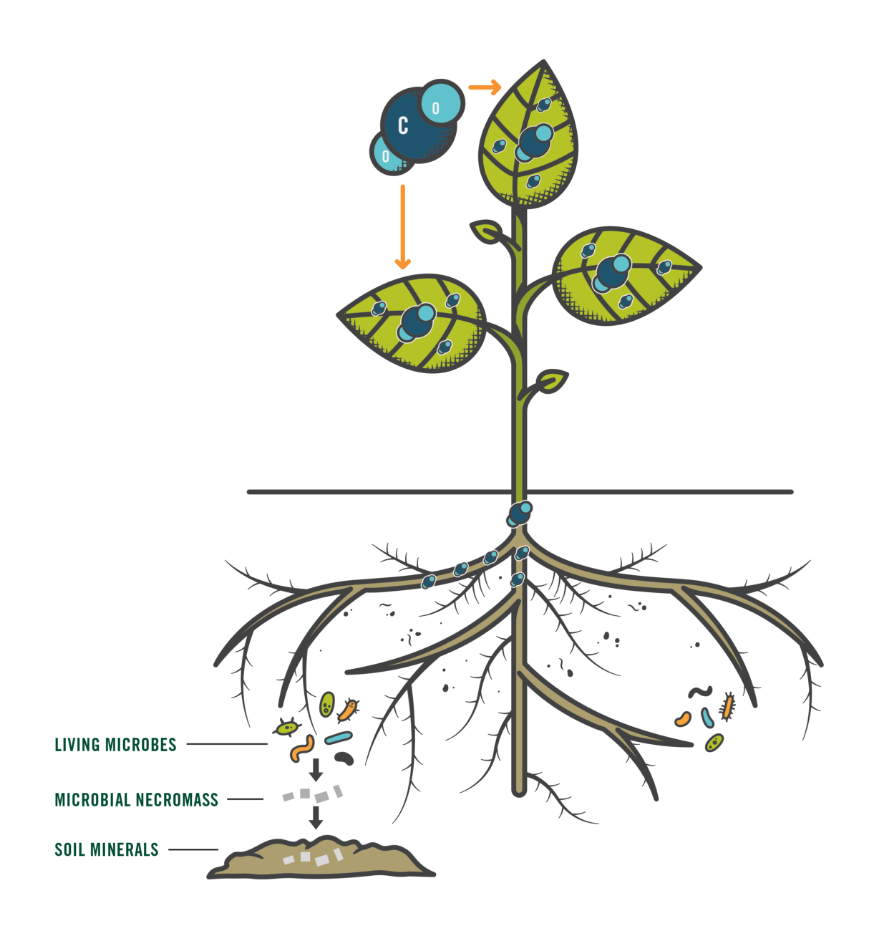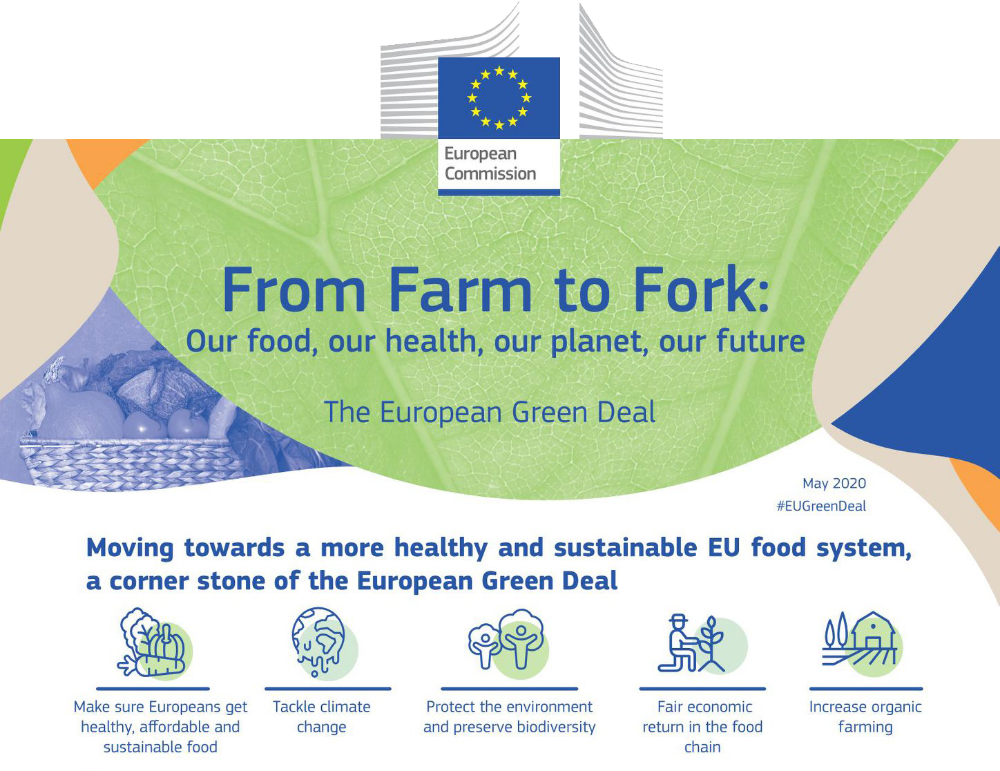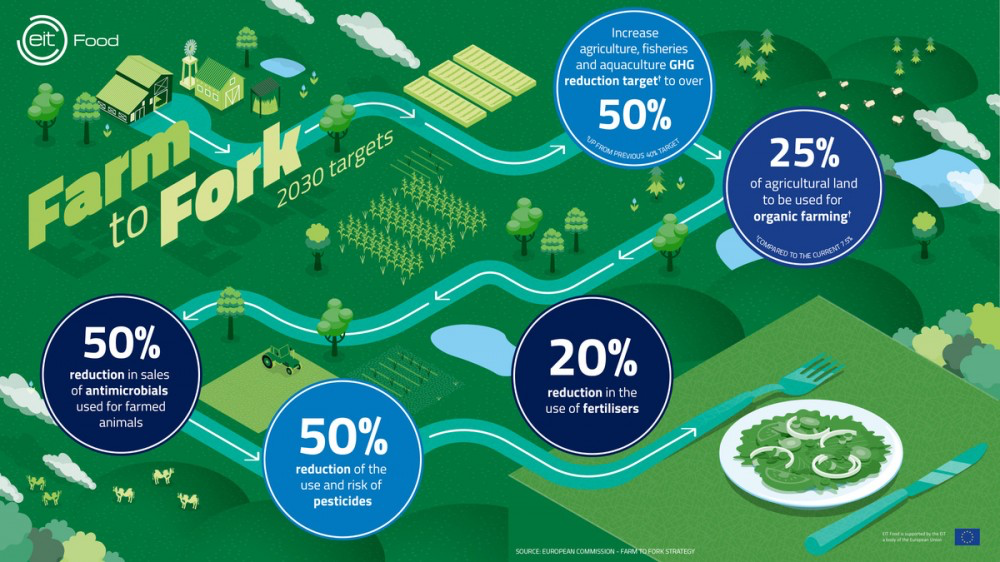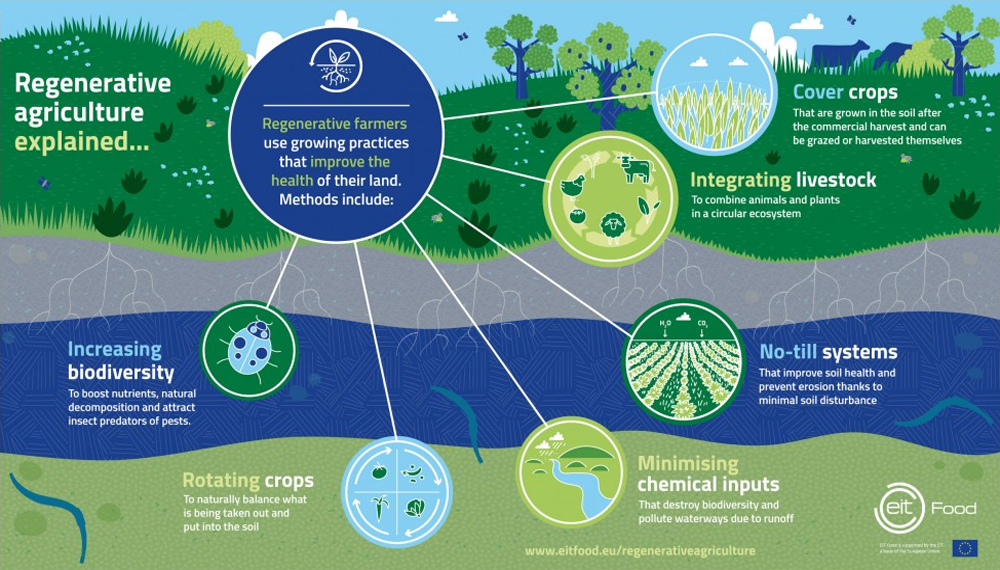Consistently sustainable
Unique wines are created on an environmentally friendly basis.
Always consistently environmentally friendly, in the vineyard, in the cellar and beyond.
The premise: better to lose money than not be true to yourself.
Regenerative agriculture
Regenerative agriculture is a systems approach to farming that promotes soil health by supporting biodiversity, above and also below ground, to return carbon and nutrients to the soil.
Environmental diversity is the main driver of soil carbon sequestration and many other benefits to farms and ecosystems [25]. Soil organic carbon and the soil organic matter in which it resides are critical to plant growth by mediating soil aggregation, temperature, water infiltration and retention, and nutrient cycling. Soil organic matter also supports ecosystem services: Reducing erosion, filtering pollutants, and providing habitat and food for various species. Without sufficient organic matter, soil cannot support microbial life or plant life without large amounts of imported inputs.
Two-thirds of conventional maize and wheat soils are enriched to less than two percent organic matter [12], which limits yields and requires the introduction of chemical inputs.
This is life-sustaining food production that ignores the enormous potential for creating healthy food by healing the land.
But there is another way, as J.I.Rodal, a founder of the organic movement in America, wrote on a blackboard in 1942:
Healthy soil = Healthy food = Healthy people
Crops and pasture can be regenerated, soil organic matter can be recovered and soil life can thrive again - through regenerative agriculture.
While regenerative agriculture needs to be a place-based, tailored systems approach, there are several practices that are interconnected. However, these practices are not automatically regeneration - they are a starting point, not the end point.
Minimum regenerative agricultural practices that support soil carbon sequestration include:
Diversification of crop rotations
Cultivation of root crops, foundations and perennials?
retain harvest residues
Use of natural fertilizer sources, such as compost
Use of high-input grazing and/or integration of crops and livestock
Reduction of tillage frequency and depth
Elimination of synthetic chemicals
Regenerative agriculture focuses on outcomes and practices that ensure results: these are interconnected.
Practices support soil life and minimize erosion by retaining biomass from a variety of organisms and animals, such as roots, shoots, and microbes that cooperate and sequester carbon.
While most practices that allow carbon sequestration in the soil are associated with regeneration.
Farm systems are "best management practices" that can be adapted to any type of farm.
However, supporting soil life is not as simple as adding a single exercise; the synergies of interrelated practices, are key to environmentally friendly diversity that sequesters carbon in the soil [27].
SOIL CARBON SEQUESTRATION
Soil carbon sequestration means maximizing atmospheric carbon dioxide removal and minimizing soil carbon losses.
For soil carbon sequestration to occur, all soil organic carbon must be sequestered and derived from the atmospheric carbon pool and can be transformed into soil organic matter by plants, plant debris, microbial residues, and other organic solids [28]. Soil organic matter consists of about 50% of soil organic carbon [29].

- PHOTOSYNTHESIS
During photosynthesis, plants convert carbon dioxide (a gas) into sugars (carbohydrate molecules). - NUTRIENT METABOLISM
This plant carbon enters the soil in the form of litter or root exudation. Soil microorganisms (fungi) and bacteria live in association with plant roots and decompose these organic compounds. During decomposition, nutrients are released (nitrogen, phosphorus, sulfur, etc.) to support plant growth. - CARBON CAPTURE
Microbial necromass (dead microbial biomass) can be stored in organo-mineral associations or microaggregation. This physically protected stable carbon is mostly of microbial origin. - RESTORING THE BALANCE
Increasing the number of microorganisms in the soil helps rebalance carbon levels, leading to healthier soil, healthier food, and a healthier plan.
From the farm to the fork
The farm-to-fork strategy is at the heart of the European Green Deal
Aim's to make food systems fair, healthy and environmentally friendly.



"Regenerative for Soil Health and Carbon Sequestration" and "Carbon Sequestration - How it works".
of "REGENERATIVE AGRICULTURE and the SOIL CARBON SOLUTION", authored by: Jeff Moyer, Andrew Smith, PhD, Yichao Rui, PhD, Jennifer Hayden, PhD, September 2020, Rodale Institute
[8] Lal, R. Soil carbon sequestration to mitigate climate change. Geoderma 2004, 123, 1-22, doi:10.1016/j.geoderma.2004.01.032.
[12] Oldfield, E.E.; Bradford, M.A.; Wood, S.A. Global meta-analysis of the relationship between soil organic matter and crop yields SOIL 2019, 5, 15-32, doi:https://doi.org/10.5194/soil-5-15-2019.
[25] Hungate, B.A.; Barbier, E.B.; Ando, A.W.; Marks, S.P.; Reich, P.B.; Gestel, N. van; Tilman, D.; Knops, J.M.H.; Hooper, D.U.; Butterfield, B.J.; et al. The economic value of grassland species for carbon storage. Science Advances 2017, 3, e1601880, doi:10.1126/sciadv.1601880.
26] Lorenz, K.; Lal, R. Cropland Soil Carbon Dynamics. In Recarbonization of the Biosphere; Lal, R., Lorenz, K., Hüttl, R.F., Schneider, B.U., Braun, J. von, Eds; Springer Netherlands, 2012; pp. 303-346 ISBN 978-94-007-4158-4.
[27] Lemaire, G.; Franzluebbers, A.; Carvalho, P.C. de F.; Dedieu, B. Integrated crop-livestock systems: strategies to achieve synergy between agricultural production and environmental quality. Agriculture, Ecosystems & Environment 2014, 190, 4-8, doi:10.1016/j. agee.2013.08.009. [28] Olson, K.R.; Al-Kaisi, M.M.; Lal, R.; Lowery, B. Experimental Considerations, Treatments, and Methods in Determining Soil Organic Carbon Sequestration Rates. Soil Science Society of America Journal 2014, 78, 348-360, doi:10.2136/sssaj2013.09.0412. [29] Pribyl, D.W. A critical review of the conventional SOC to SOM conversion factor. Geoderma 2010, 156, 75-83, doi:10.1016/jgeoderma.2010.02.003.
